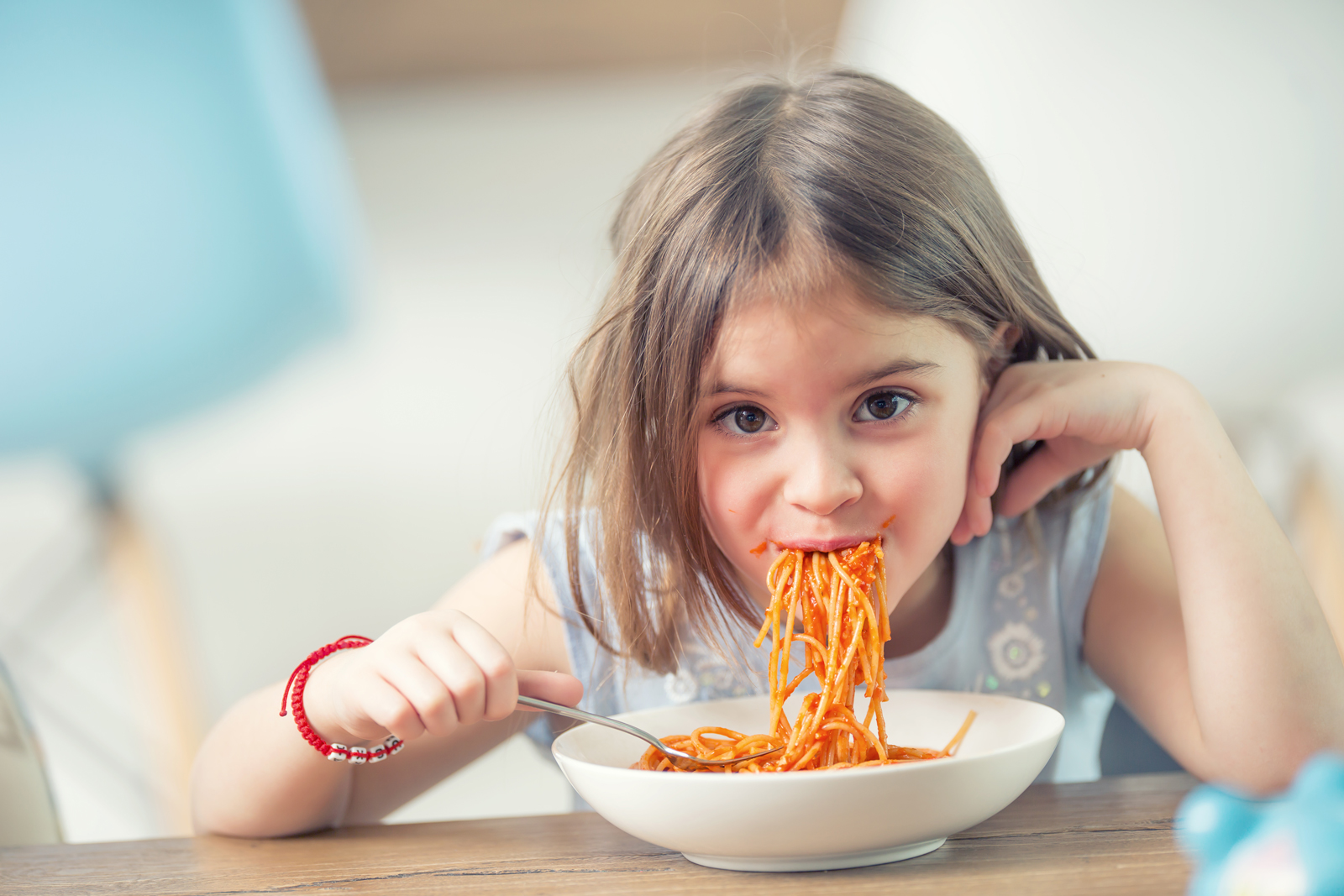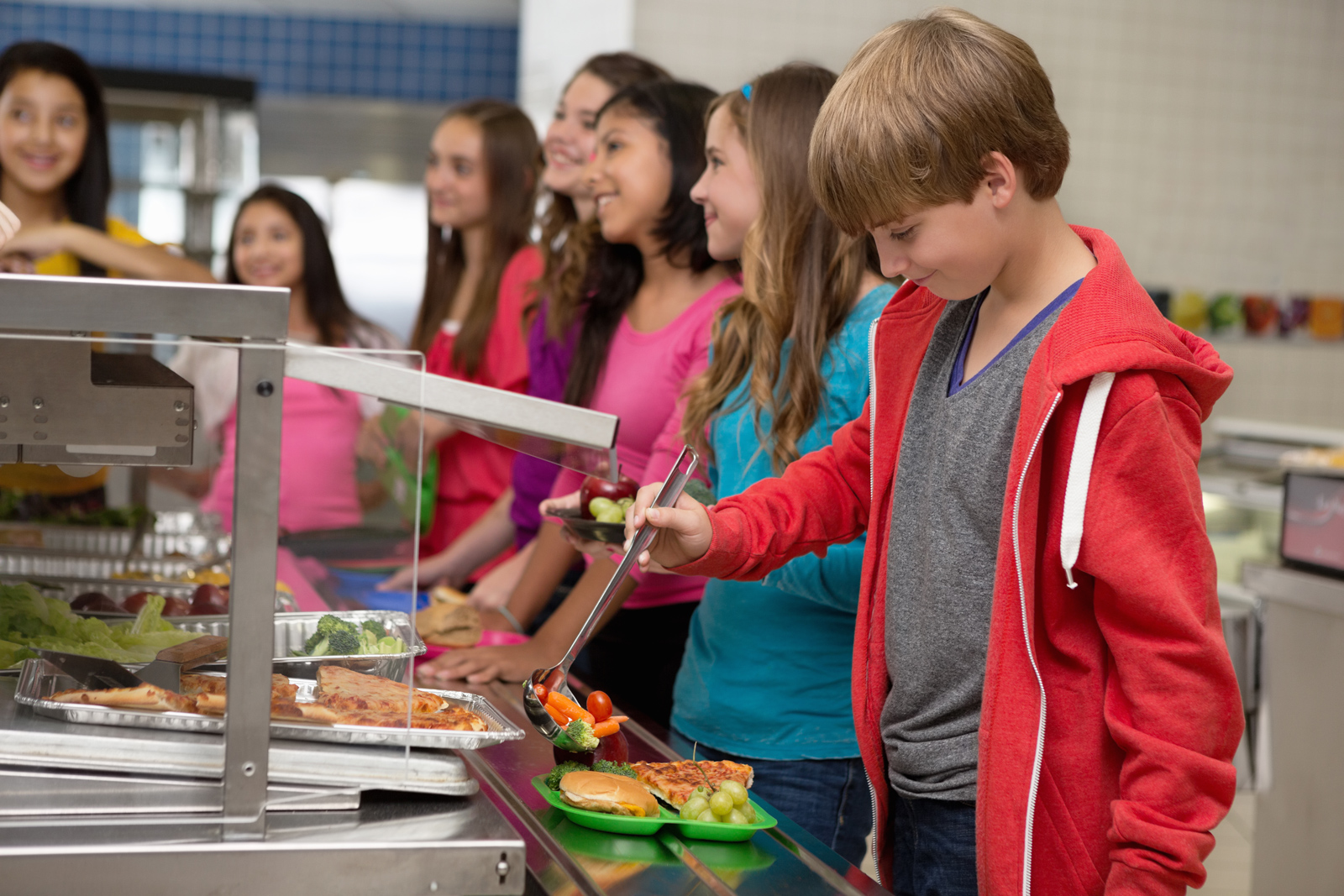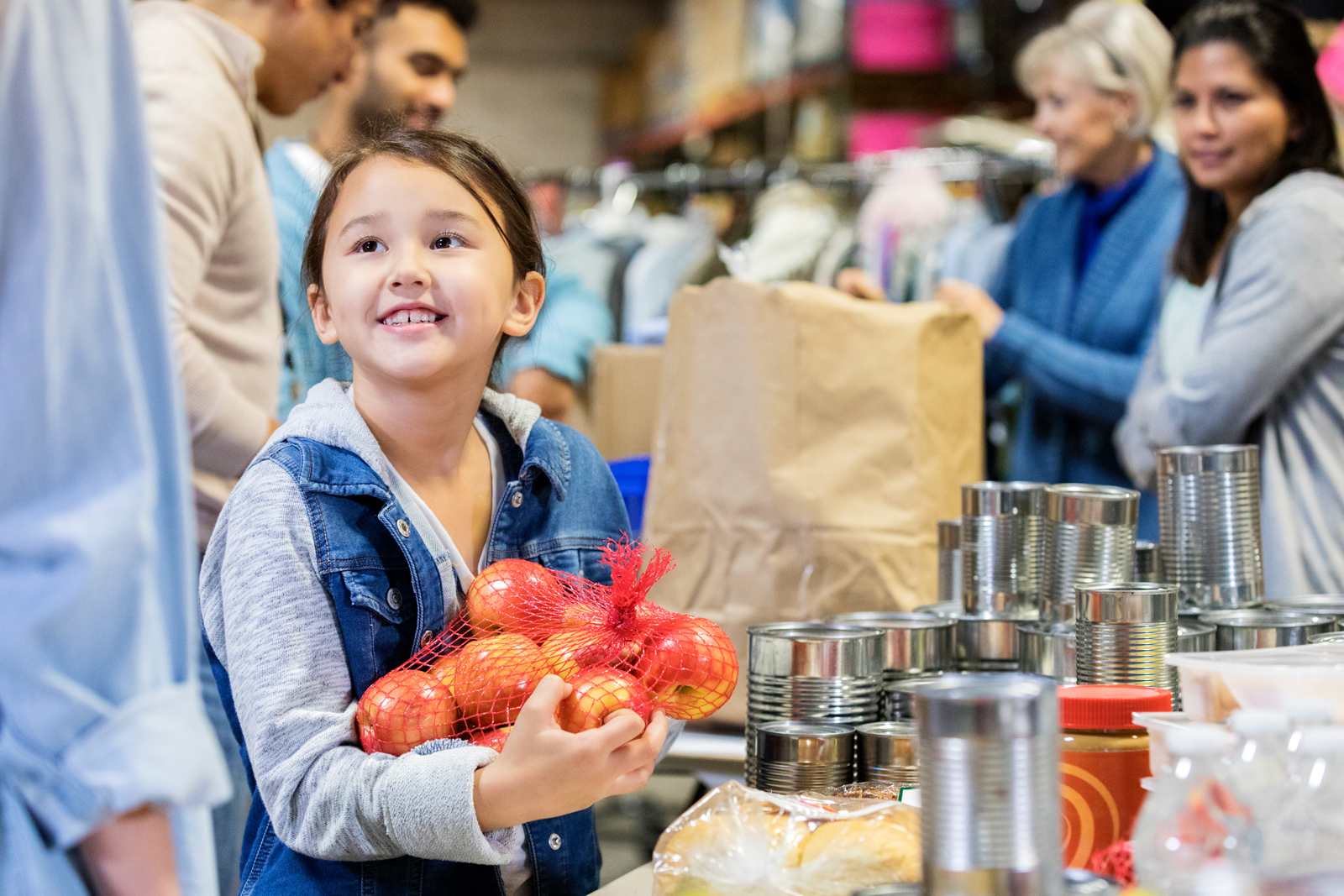
I believe food should be one of the love languages. Yes, I know, you’re probably thinking that cooking and grocery shopping are acts of service, so food is already included in the lineup. Personally, though, I think it should stand alone, in its own category. I am super passionate about food, and I show my family I love them by grocery shopping, by cooking for them, by making sure their bellies are full of the best and healthiest foods. When I ask my sons, daughters, my husband if they are hungry, I am really saying: I love you.
I completely take it for granted that we will have plenty of food at all times. Even during a pandemic, I am not worried whether we will have enough. Instead, I feel a tinge of annoyance when the Instacart shopper brings me two pineapples as a replacement for two packages of pre-cut pineapple spears. I have the luxury of shopping for healthy, fresh food at well-stocked grocery stores, and focusing on bringing the all the best home for our kids. I cannot even imagine one of my kids going hungry… well not for more than a few minutes.
However, all across the country and probably not far from where I am sitting and writing, families are worried about food. They are worried that there will not be enough money at home to cover all expenses. They worry that they may have to cut back on the groceries budget to pay for rent or utilities or transportation costs. Millions of households in this country are food insecure in the most normal of times.
The situation is only exacerbated by the current threat of COVID-19. Efforts to flatten the curve have closed non-essential businesses throughout the country, and millions of people have found themselves without work. Yes, unemployment benefits help, but only to a point. Also, unemployment does not kick in instantaneously. Claims need to go through proper approvals, the process takes time, and meanwhile families have no cash in their pockets. Finally, millions of our nation’s children rely on the School Lunch Program, the School Breakfast Program, the Child and Adult Care Food Program, and the Special Milk Program for meals five days a week. But what happens when schools are closed? The inability to access these meals adds additional strain on already struggling families.
I find the idea of a hungry child unbearable, especially in this country. I show my family I love them by feeding them. As a mom, I can only imagine the feelings of pain, frustration, defeat, and anger of a parent who simply cannot provide a meal for their kid, let alone a nutritious one.
At KID things, our business is all about children and parents. We make items that bring joy to children, of course. Our toys and clothes let kids know that they are loved. More importantly though, as a mom, I know the feeling of peace that comes from knowing that our kids have all they need, that I am taking care of them in the best way possible. Our business aims to make parents feel that sense of contentment.
Well, we have decided to spread that love and joy a bit farther still. Starting April 1, 2020, we will be donating $1.00 to No Kid Hungry for each item sold. No Kid Hungry is a campaign launched by Share Our Strength, a non-profit organization dedicated to ending childhood hunger. Each dollar helps provide 10 meals. I hope our modest donation helps a parent feel at peace, and a child feel happy and loved. It is the little bit we can do to help with the current crisis, and beyond. Thank you to all our customers for making this possible!
Keep reading to learn a bit more about food insecurity in this country, what is being done, and how you can do more.

What is food insecurity?
The USDA defines food insecurity as a household-level economic and social condition of limited or uncertain access to adequate food. [1] Whereas food-secure households have access, at all times, to enough food for an active, healthy life for all household members, [2] food-insecure households do not. Food insecure households lack financial resources to regularly buy food. They eat less than they need, cutting the size of meals or skipping meals entirely because there is not enough food in the house and no money with which to buy food. They worry that the food they purchased for the week will not last, and at times it does not last. Due to limited resources, parents in food-insecure households have to choose between food and housing, utilities, healthcare, and transportation. To cope with lack of money for food, most purchase discounted or inexpensive, unhealthy food. [3]
In my mind, there are two kind of hunger. The first, as Merriam-Webster’s puts it, is an uneasy sensation occasioned by the lack of food. This is the hunger we all know daily, that feeling in our belly signaling that it’s time for breakfast, lunch, dinner, or snack. The second definition is a weakened condition brought about by prolonged lack of food. This is the hunger that happens when there is not enough food. Not enough today, not enough tomorrow, just not enough. I learned the term food insecurity fairly recently I my life, and the phrase is terrifying to me. It means not being sure whether you will be able to have a full meal the next time you are hungry. The idea of a parent not being to fill a hungry child’s belly is both heartbreaking and unthinkable. The idea of children going hungry in the United States, one of the wealthiest nations in the world, is outrageous… and yet it happens all the time.

Food insecurity in the United States
When we think of poverty and starving children, we think of developing countries in South America and Africa, countries where there are simply not enough resources and widespread poverty. When I was a kid, we watched the effects of drought in Ethiopia on Channel One, and TV commercials of Sally Struthers advocating for children in Guatemala. We read Hans Christian Andersen’s “The Little Match Girl” and watched Annie. What I learned from all this was that hunger happened a long time ago or elsewhere, but not here and now. Sadly, as an adult, I have learned that in a country as prosperous as the United States, persistent hunger and food insecurity are a problem, and they are a problem today.
In the U.S., 86.1% of households with children were food secure throughout 2018, [2] which means that 13.9% of households with children experienced food insecurity at some level. Often, parents can shield their children from food insecurity by making do with less while providing for their kids. However, in 7.1% of U.S. households, both parents and children were food insecure in 2018. 6 million children lived in the households where both children and adults did not have enough food. [2] It breaks my heart to even imagine not having enough food to feed my children. It is unimaginable to me, and yet it happens all around us.

Consequences of food insecurity for children
One of the most obvious consequences of food insecurity and hunger is malnutrition, resulting from not enough food or eating a diet of inexpensive, easily accessible junk food. Poor nutrition and poor eating habits also lead to other health problems down the road, such as poor development, obesity, and diabetes. There are a number of less obvious consequences of hunger too. Children need food to play, to learn, to grow. Poor nutrition impacts both academic and social performance at school. Hungry kids are distracted by that gnawing feeling in their belly, and focusing on where they’ll get their next meal, not the ABCs. Hunger has consequences on kids’ social interactions as well. Children growing up in food-insecure homes fear being singled out and stigmatized. Whether through bullying or shame, many kids who are provided breakfast [before school hours] will go without it to avoid being seen as “the poor kid.” [5] It’s pretty obvious that a child’s success at school has a profound impact on their future success and earning potential. We need to set children up for success, not failure, by making sure their bellies are full and their minds ready to learn.

What programs are available
The U.S. government sponsors several federal nutrition programs aimed at reducing food insecurity. In fact, increasing food security and reducing hunger are part of the mission of The Food and Nutrition Service of the USDA [6]. The nation’s largest food assistance program is the Supplemental Nutrition Assistance Program (SNAP). Formerly the food stamps program, it supplements the food budget of food-insecure households by providing something like a debit card with funds for purchase of groceries. According to No Kid Hungry, 20 million kids in America rely on food purchased with SNAP. [7] The Special Supplemental Nutrition Program for Women, Infants and Children, popularly known as WIC, provides additional supplemental nutrition assistance for low income pregnant and post-partum mothers. This program is aimed at giving underprivileged babies the best start in life.
The USDA also works to feed children outside the home, at daycare and school. The National School Lunch Program (NSLP), School Breakfast Program (SBP), Child and Adult Care Food Program (CACFP), and the Special Milk Program (SMP) all work to provide free or low-cost meals to food insecure children, through providing breakfast, lunches, snacks and milk at schools and daycare facilities. In the summer months, the USDA also subsidizes the Summer Meals Program, which provides free lunches to children who would otherwise rely on the above programs during the school year.
Finally, in emergency situations, The Emergency Food Assistance Program (TEFAP) provides staples to food banks and other emergency food distribution centers, making sure that families have enough food to get through short-term crises.

How non-profits are helping
Sadly, the federal nutrition programs are not enough. The USDA does a great job at administering and launching the programs, but sadly they do not always reach those in need. Non-profits help connect food-insecure children and families with the federal nutrition programs. Further, many families experience food insecurity and do not qualify for government assistance. Non-profits help in the following ways:
- Organizations big and small operate local food pantries, providing easy, immediate access to food for families in need.
- During the coronavirus-related quarantine, they support local communities in starting up and operating free meal sites, grab and go meals, and food delivery programs. In some communities, volunteers go to door to make sure that families have food.
- Feeding America runs the BackPack Program, ensuring that children have access to meals for the weekend. This program is super important now, that children are not in school and need access to food.
- No Kid Hungry works with local communities to start summer meal sites and mobile meal trucks so that children have access to meals in the summer, when school is not in session. In addition, the organization runs a texting service to notify parents where and when summer meals are available.
- One of the programs funded by the CACFP Program is the Afterschool Meals Program, which funds meals at schools after school hours. The program is yet widely adopted nationwide, and No Kid Hungry works with schools to set up the programs for needy kids.
- They work with schools to make sure that breakfast programs are offered during school hours, in the classroom, for all kids, not just before school for needy families, so that children can avoid being stigmatized.
- They operate community education classes, teaching parents how to shop for inexpensive but healthy ingredients to make affordable and nutritious meals for their families.
- They advocate for food-insecure families on Capitol Hill, to ensure that fighting hunger stays top-of-mind for our policymakers in Washington. Likewise, they work with state and local government agencies, making sure that hungry children remain a priority.
- They spread the word. Raising awareness of food insecurity is part of the solution. When more people know about the problem, there are more people willing to help.

How you can help
If you’ve read this far, you know that childhood hunger is a widespread problem throughout our country. If you want to get involved in the solution, here are some ideas on where to get started:
Donate to a food bank or hunger relief organization. Cash is always the best donation, since non-profits have the ability to purchase wholesale food at much lower prices than what is available to the average consumer, stretching your donation money further. However, you can also donate goods at many food pantries, just make sure to check with them ahead of time.
Donate your time. Volunteers are always needed to sort, pack, and deliver food.
Click here to the USDA list of the largest Hunger Relief Organizations.
There are so many other organizations worldwide. We donate to Philabundance locally, United Way, and UNICEF globally. Other organizations include Action Against Hunger, Bread for the World Institute, Food Bank For New York City, Freedom from Hunger, The Hunger Project , Meals on Wheels, and so many more!
Ask around in your own community. There are families that need help in our own towns. Help organize a local food collection, or check in with your school or church to see what they are doing for local families.
Be an advocate! Sometimes, you just need to tell people. Honestly, I did not really understand the profound impact of food insecurity on U.S. families until No Kid Hungry started a national campaign with The Food Network. So, follow non-profits on social media, educate yourself, and tell your friends. Together, every little bit contributes to making a difference.

Join us
KID things is proud to support the efforts of No Kid Hungry. It may be on a small scale, but we are also doing our part. Starting in April of 2020, we will be donating a portion of each item sold to No Kid Hungry, helping their mission to end childhood hunger, and connect hungry children with nutrition programs that work.
Sources
[1] US Department of Agriculture, (September 4, 2019). Definitions of Food Security. Available online at: https://www.ers.usda.gov/topics/food-nutrition-assistance/food-security-in-the-us/definitions-of-food-security.aspx
[2] US Department of Agriculture, (September 4, 2019). Key Statistics & Graphics. Available online at: https://www.ers.usda.gov/topics/food-nutrition-assistance/food-security-in-the-us/key-statistics-graphics.aspx
[3] Feeding America (2020). Compromises and Coping Strategies. Available online at: https://www.feedingamerica.org/hunger-in-america/impact-of-hunger
[4] “Hunger.” Merriam-Webster Dictionary, https://www.merriam-webster.com/dictionary/hunger. Accessed 13 April 2020.
[5] No Kid Hungry (2020). School Breakfast Program. Available online at: https://www.nokidhungry.org/what-we-do/school-breakfast
[6] US Department of Agriculture (July 1, 2019). About FNS. Available online at: https://www.fns.usda.gov/about-fns
[7] No Kid Hungry (2020). Child Hunger Advocacy. Available online at: https://www.nokidhungry.org/what-we-do/child-hunger-advocacy

